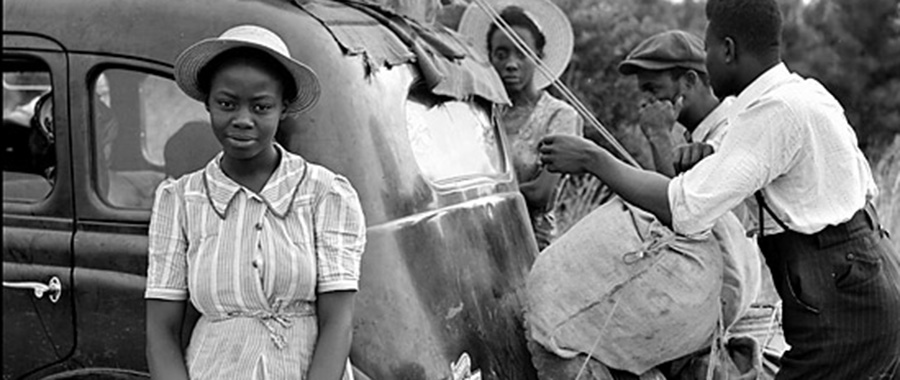The 1920s stand as a pivotal decade in American history, characterized by social upheaval and the burgeoning of cultural movements. In this era, the struggle for racial unity emerged as a crucible for advocates espousing the Bahá’í teachings. The principles espoused by the Bahá’í Faith during this time encapsulated a transformative vision for societal harmony, intertwining the notions of racial equality, justice, and the oneness of humanity. Advocating for such ideals, however, posed considerable challenges, necessitating an exploration of the historical context, the manifestations of these teachings, and the profound adversities faced by those who endeavored to promote racial unity.
To understand the struggles of Bahá’í advocates in the 1920s, one must first delve into the socio-political milieu of the United States during this era. The aftermath of the First World War initiated a complex interplay of societal changes. The Great Migration saw a significant influx of African Americans moving from the rural South to urban centers in the North, seeking better opportunities. Nonetheless, this demographic shift often met with fierce resistance and exacerbated racial tensions. Amidst this turbulence, Bahá’í teachings provided a distinctly progressive narrative. These teachings asserted that humanity is one, transcending artificial divisions based on race or ethnicity. Such an ideology was not only radical but also fraught with opposition.
Central to Bahá’í teachings is the concept of the oneness of mankind, a principle that resonates deeply with the ethos of racial unity. The Bahá’í scriptures articulate a vision in which all human beings are regarded as equal, underscoring the detrimental effect of prejudice. However, propagating this doctrine during a time marked by systemic racism presented formidable challenges. The 1920s witnessed the resurgence of the Ku Klux Klan and other white supremacist factions that vehemently opposed integration and the idea of racial equality. Consequently, Bahá’í advocates faced not only ideological opposition but also tangible threats, isolation, and violence.
Moreover, within the Bahá’í community, the task of promoting racial unity necessitated navigating inter-community dynamics. The American Bahá’í community was, at that time, predominantly white, resulting in a unique set of challenges concerning outreach and inclusivity. While the teachings of Bahá’u’lláh called for the dismantling of racial barriers, many white Bahá’ís grappled with inherited prejudices and societal norms that undermined these ideals. The challenge was not solely external; it was intrinsic. The advocates had to confront their own doubts and fears in the quest for authentic, meaningful dialogue across racial lines.
An exemplary initiative during this period was the creation of the Bahá’í interracial committees. These committees were established to facilitate dialogue between different racial groups and to further the cause of racial harmony. Nevertheless, engaging individuals from diverse backgrounds proved complex. Many were skeptical of the intentions behind these outreach efforts; some viewed them as patronizing rather than genuinely altruistic. Thus, advocates had to persevere in cultivating trust and mutual understanding in a climate rife with mistrust and hostility.
The challenges posed by societal norms were mirrored in broader cultural shifts. The Harlem Renaissance, an influential cultural movement that celebrated African American culture, provided a fertile ground for advocacy but also revealed significant divides. While Bahá’í advocates were striving for racial unity, they were often met with the prevailing notions of black nationalism, which emphasized self-sufficiency and pride in racial identity as a response to systemic oppression. This divergence in perspectives sometimes led to tensions; for some, the Bahá’í message appeared too universal and detached from the immediate struggles faced by African Americans. Thus, balancing the universalist aspirations of the Bahá’í Faith with the specific cultural contexts of various racial groups posed a significant struggle for advocates.
In addition to these political and social challenges, the emotional toll on advocates for racial unity cannot be understated. The personal commitment to the Bahá’í principles often placed individuals at odds with family members, friends, and community. When the advocate’s ethos clashed with societal norms, the resultant alienation could be profound. Many advocates remained steadfast, driven by an unwavering belief in the eventual triumph of justice over prejudice. They often drew strength from the writings of Bahá’u’lláh, which extolled the necessity of courage and perseverance in the face of adversity.
As the decade progressed and society grappled with the implications of racial identity, the legacy of Bahá’í advocates began to crystallize. Their resolute commitment to fostering racial unity contributed to sowing the seeds of civic engagement and social change. In many ways, they set the stage for the civil rights movements that would surface in subsequent decades, illuminating pathways through which marginalized communities could strive for equality. Bahá’í teachings resonated through the generations, inviting new adherents to champion the cause of unity across all racial divides.
In conclusion, the struggles faced by Bahá’í advocates for racial unity in the 1920s were deeply entwined with a tumultuous socio-political landscape characterized by racial strife and ideological discord. Their commitment to the oneness of humanity, while met with significant obstacles, set in motion a broader conversation about race relations in America. By examining their challenges, we gain insights not only into the historical context of racial advocacy but also into the enduring relevance of Bahá’í teachings in contemporary dialogues about unity and justice.
